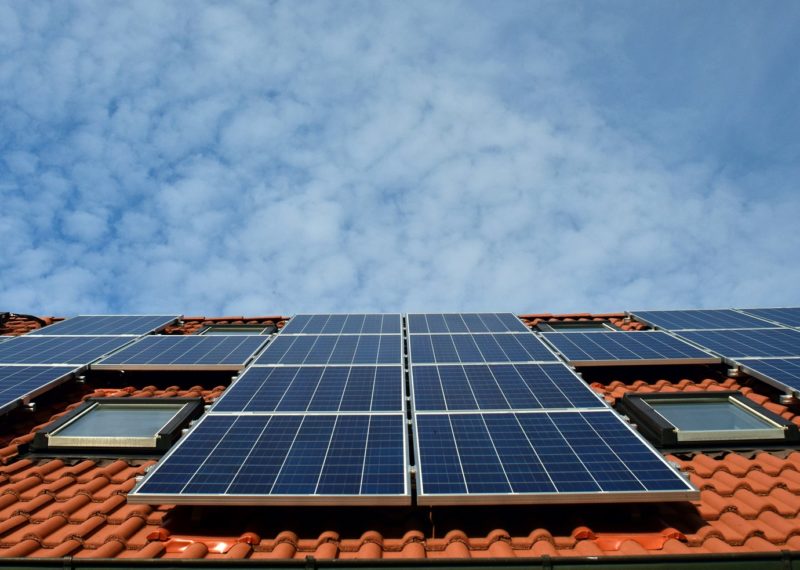Puerto Rico is in the throes of an energy crisis. On Thursday, a fire at a power plant outside the southeastern town of Guayanilla caused an island-wide blackout. Blackouts are a feature of daily life, along with price increases, which have sparked protests across the island.
The electrical grid relies on imported fossil fuels for 97 percent of its electricity needs. And though Puerto Ricans pay roughly twice what mainland Americans pay to power their homes, the island’s decades-old grid is prone to blackouts and is vulnerable to hurricanes and flooding. In the wake of Hurricane Maria, many on the island went without electricity for months.
It doesn’t have to be this way, says Ruth Santiago, an environmental lawyer and advocate. Rooftop solar power has the potential to provide four times the island’s residential electricity needs, she says, citing recent research. Santiago is part of an island-wide push toward solar energy outlined in Queremos Sol, or “We Want Sun,” which envisions solar panels on the rooftops of every home in Puerto Rico.
Nexus Media News spoke with Santiago about Puerto Rico’s energy crisis and her vision for a solar-powered future. This conversation has been edited for clarity.
How are most Puerto Ricans experiencing the island’s energy crisis?
There continue to be a lot of power outages. In February, there was a big power outage in San Juan – 700,000 people lost power [for most of the day] on a Monday, starting the workweek. LUMA Energy, a private entity, took over the operation and management of the grid last June in an effort to improve service, but the blackouts have continued.
Power outages can mean the difference between life and death. Many people depend on at-home ventilators and dialysis machines or rely on keeping medications refrigerated. When a company [or utility] can’t provide power consistently, it costs lives, which is what happened after Hurricane Maria.
What is Queremos Sol?
Queremos Sol is a call for a radical shift away from fossil fuels and toward renewables in Puerto Rico. It was started about 10 years ago by a group of university professors in Mayaguez who were studying how the electric system here could better serve the public. They found solar power was the cleanest, most efficient option. The movement gained traction after Hurricane Maria and today brings together environmental, community, labor and academic advisors to work on this road map.
[We advocate for] the democratization of energy – communities not just being active consumers of energy, but actually participating in the production of it. We want the decolonization of the electric system and to rid Puerto Rico of its terrible dependence on fossil fuel.
We’re calling for 100 percent renewable energy by 2050. We’re calling on PREPA, the local utility, to work with local contractors and communities to develop a transparent plan to buy solar panels in bulk, provide them free-of-charge, or at low-cost, to residents and organize large-scale installations across the island.
What are other island-wide efforts to support solar projects?
My community in Salinas, in the island’s Southeast, has launched a pilot program [that] installed solar panels on a community center and trained locals to help install them throughout the island – especially in environmentally impacted communities like Guayama.
Some nonprofit organizations are sponsoring rooftop systems in other community centers and hospitals; the Natural Resources Defense Council has also partnered with local artists to produce a graphic novel featuring Rosario Dawson that promotes solar power in Puerto Rico.
We can do solar now. The government of Puerto Rico and other interested companies still throw around the myth that methane gas or natural gas is a bridge fuel. But renewable sources like solar, plus storage batteries, can provide as much critical electric service as fossil fuels, so that low and medium-income families and businesses, institutions and schools can run, and not be constantly interrupted the way we’re seeing now.
You advocate for rooftop solar over big solar farm projects. What’s wrong with solar farms?
Utility-scale, centralized, renewable energy projects rely heavily on transmission and distribution, just like fossil-fuel-powered electricity, which means they’re not resilient or reliable. One study found that utility-scale renewable energy projects that existed prior to Hurricane Maria took 15 months to reconnect to the grid and achieve the generation levels that they were at before the hurricane.
These farm projects can have a horrible impact on the land, and they have to contend with not just storms and hurricanes, but vegetation and wildlife. That’s why we need decentralization through distributed renewables. You don’t have these problems with rooftop solar panels.
In 2019, Puerto Rico passed an ambitious plan to switch to renewables. The Federal Emergency Management Agency has earmarked $12 billion to help the island repair its grid. But local officials say they’re not on track to meet these goals. What do you think went wrong?
There’s this mentality at the central government level in Puerto Rico, and with LUMA, that what we need is to rebuild a 20th century electric system. That system uses transmission lines and towers and poles running from here in southern Puerto Rico, where most of the fossil fired power plants are. That’s not what we need.
We need to rethink this whole idea about transmitting energy to substations and then breaking that down to distribution lines and then getting it to people – that’s like a ‘trickle down” energy system. We can have direct energy delivery on rooftops, which is less vulnerable to hurricanes.
The plan calls for 40 percent of the island’s electricity to come from renewable sources by 2025; 60 percent by 2040 and 100 percent by 2050. Was the plan too ambitious to begin with?
I don’t think it’s too ambitious. I think the goals probably could be met even sooner if PREPA would use the historic amount of funds from FEMA to invest in acquiring, and installing, new rooftop solar and energy storage systems. Studies from the Department of Energy already show rooftop solar has the potential to provide four times the island’s residential electricity needs. The problem is that LUMA and PREPA plan to use this unprecedented allocation of funds to rebuild the same wires and substations that came down during Maria and will surely be knocked down by the next hurricane – or the one after that.
In this uncertain backdrop, what’s next for the island’s grid?
That’s the question because everything is in place. We have this historic amount of FEMA funds – initially it was $9.6 billion, and is now up to $12 billion. That funding [could make] it possible for low and medium-income people to have access to resilient, onsite solar and battery storage.
But we are seeing LUMA and PREPA moving in the opposite direction. They’re hoping to rebuild the same centralized grid; if they were to adopt the Queremos Sol proposal, which we’ve advocated for with a rigorous public education campaign, we could use that money to affix solar panels on the roofs of every home of the island to ensure renewable, reliable and equitable energy.
We’re just two months away from hurricane season. Is the island ready?
I don’t think we’re ready. It doesn’t matter how much repair work or hardening is done to the transmission and distribution lines. I think it’s a law of physics: vertical structures will not hold up to hurricane-force winds. Structures like panels that are more horizontal and latched onto rooftops fare better during hurricanes. Every indication is that we need a decentralized grid to be able to [with]stand the next hurricane.
This article was made possible by a grant from the Open Society Foundations. Nexus Media News is an editorially independent, nonprofit news service covering climate change. Follow us @NexusMediaNews.


